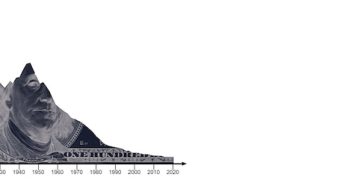Unemployment Rate Steady at 3.7%: Sector-by-Sector Analysis

The US unemployment rate remains steady at 3.7%, according to the latest data, prompting a detailed sector-by-sector analysis to understand the underlying trends and potential future impacts on the economy.
The latest jobs report indicates that the unemployment rate remains steady at 3.7%, holding steady. What does this mean for different parts of the economy?
Understanding the Stable Unemployment Rate
The recent announcement that the unemployment rate has remained unchanged at 3.7% has sparked widespread interest among economists, policymakers, and the general public. This stability prompts a deeper investigation into the forces at play within various sectors of the economy.
Understanding this figure requires a sector-by-sector analysis, providing insights into which industries are thriving, which are struggling, and where potential challenges lie ahead.
Sector Performance Overview
To truly grasp the implications of a steady unemployment rate, it’s essential to dissect the performance of key sectors within the US economy. Significant variations often exist beneath the surface of the overall number.
Here’s an overview of how several sectors are currently performing:
Technology Sector
The tech sector has seen a mix of successes and challenges. While some companies continue to expand and hire, others have implemented layoffs due to evolving market conditions and financial pressures.
Healthcare Sector
Healthcare remains a robust sector with consistent job growth, driven by an aging population and ongoing demand for medical services. This sector consistently adds jobs, providing a stable employment base.
Manufacturing Sector
The manufacturing sector is experiencing a period of moderate growth, supported by increased domestic demand and infrastructure projects. However, it also faces challenges from global competition and supply chain disruptions.
- Technology: Ongoing innovation and demand for digital services fuel job creation in specific areas.
- Healthcare: An aging population and increasing healthcare needs drive stable and consistent employment opportunities.
- Manufacturing: Government initiatives and reshoring efforts contribute to growth, but global competition poses challenges.
- Retail: The shift to e-commerce and changing consumer preferences impact traditional retail jobs.
In conclusion, sector performance is diverse, reflecting the dynamic nature of the US economy. A steady unemployment rate masks the underlying shifts and transformations occurring across industries.

Regional Employment Disparities
While the national unemployment rate provides a general overview, significant disparities exist across different regions of the United States. These regional differences are influenced by factors such as local economies, industry concentrations, and demographic trends.
Understanding these disparities is crucial for policymakers and job seekers alike.
States with Low Unemployment
Several states consistently report lower unemployment rates than the national average. These states often benefit from diversified economies, strong education systems, and attractive business environments.
States with High Unemployment
Conversely, some states struggle with higher unemployment rates, often due to reliance on specific industries, economic downturns, or socio-economic challenges.
- Diversified Economies: States with a mix of industries tend to weather economic storms better.
- Education and Training: Regions with strong educational institutions and workforce training programs often have lower unemployment.
- Economic Policies: State and local policies can either attract or deter businesses, impacting job creation.
- Demographic Trends: Factors such as migration patterns and aging populations influence regional employment rates.
Regional employment disparities highlight the need for targeted economic development strategies that address the unique challenges and opportunities within each area. By understanding these differences, policymakers can better allocate resources and support job growth where it’s needed most.
Impact of Government Policies
Government policies play a significant role in shaping employment rates and influencing the overall health of the labor market. Fiscal policies, regulatory frameworks, and workforce development programs can all have a profound impact on job creation and unemployment.
These policies are essential tools for managing economic conditions and promoting sustainable employment growth.
Fiscal Policies
Fiscal policies, such as tax cuts and government spending, can stimulate economic activity and create jobs. Infrastructure projects, for example, create direct employment opportunities and boost demand for related industries.
Regulatory Frameworks
Regulatory frameworks can either encourage or inhibit business growth and hiring. Streamlined regulations and incentives for investment can attract companies and foster job creation.
Workforce Development Programs
Workforce development programs provide training and education to help workers acquire the skills needed to succeed in today’s economy. Apprenticeships, vocational training, and community college programs can equip individuals with valuable skills.

- Fiscal Stimulus: Government spending on infrastructure and public works projects creates jobs.
- Regulatory Reform: Streamlining regulations can reduce burdens on businesses and encourage hiring.
- Education and Training: Investing in workforce development programs equips workers with essential skills.
- Unemployment Benefits: Providing temporary support to unemployed workers helps stabilize the economy during downturns.
Effective government policies are crucial for maintaining a healthy and vibrant labor market. By carefully designing and implementing these policies, policymakers can support job creation, reduce unemployment, and promote economic prosperity.
The Role of Global Economic Factors
In an increasingly interconnected world, global economic factors exert a significant influence on the US labor market. International trade, foreign investment, and global economic trends can all impact employment rates and shape the demand for labor.
Understanding these global dynamics is essential for assessing the long-term prospects of the US economy.
International Trade
International trade can create jobs in export-oriented industries while also leading to job losses in sectors that face competition from imports. Trade agreements and tariffs can have a direct impact on employment.
Foreign Investment
Foreign investment can bring new capital and technology to the US, leading to job creation and economic growth. However, it can also result in shifts in the composition of the workforce.
Global Economic Trends
Global economic trends, such as recessions and booms, can affect the demand for US goods and services. A slowdown in the global economy can lead to reduced exports and job losses in export-dependent industries.
The US economy is deeply integrated into the global economy, making it vulnerable to external shocks and fluctuations. Staying informed about global economic trends and adapting policies accordingly is crucial for maintaining a stable and prosperous labor market.
Future Outlook and Predictions
Predicting the future of the unemployment rate is a complex task that requires analyzing various economic indicators and considering potential risks and opportunities. Economic forecasts are subject to uncertainty, but they can provide valuable insights into future employment trends.
These are key factors influencing the outlook.
Technological Advancements
Technological advancements, such as automation and artificial intelligence, are expected to continue transforming the labor market. While some jobs may be displaced, new opportunities will emerge in fields related to technology development and implementation.
Demographic Changes
Demographic changes, such as an aging population and shifts in labor force participation rates, will also impact the unemployment rate. As more Baby Boomers retire, there may be increased demand for younger workers.
Economic Policies
Economic policies, such as infrastructure investments and tax reforms, will play a critical role in shaping the future of the labor market. Government initiatives can stimulate job creation and support economic growth.
- Technological Disruption: Automation and AI will reshape industries and create new job categories.
- Demographic Shifts: An aging population will impact labor force participation rates.
- Policy Decisions: Government policies on trade, investment, and education will influence job creation.
- Global Economic Conditions: International events and economic trends will affect demand for US goods and services.
The future of the unemployment rate will depend on a complex interplay of these factors. By staying informed about these trends and adapting policies accordingly, policymakers and individuals can better prepare for the challenges and opportunities that lie ahead.
Strategies for Job Seekers and Employers
In a dynamic labor market, both job seekers and employers must adapt their strategies to remain competitive and successful. Job seekers need to acquire the skills and knowledge demanded by employers, while employers need to create attractive workplaces that attract and retain top talent.
Effective strategies for both parties are essential for fostering a healthy and productive workforce.
Strategies for Job Seekers
Job seekers should focus on developing in-demand skills, networking with professionals in their field, and crafting compelling resumes and cover letters. Continuous learning and adaptability are crucial for career success.
Strategies for Employers
Employers should invest in training and development programs for their employees, create a positive and inclusive work environment, and offer competitive compensation and benefits packages. Attracting and retaining talent is essential for business growth.
By implementing these strategies, job seekers and employers can navigate the challenges and opportunities of the modern labor market and achieve their goals. A collaborative approach that prioritizes skills development, employee well-being, and business growth is essential for fostering a thriving economy.
| Key Point | Brief Description |
|---|---|
| 📊 Stable Rate | Unemployment remains at 3.7%, indicating overall stability. |
| 🏥 Healthcare Growth | Healthcare continues to be a strong sector with steady job increases. |
| 🌐 Global Impact | Global factors significantly influence the US labor market. |
| 🤖 Tech Challenges | Tech sees mixed results with both hiring and layoffs. |
Frequently Asked Questions (FAQ)
▼
A stable rate can be attributed to balanced job creation and labor force participation, reflecting economic stability across various sectors.
▼
Healthcare, technology (in specific areas), and manufacturing are prominent sectors contributing to job growth in the US.
▼
Government policies such as fiscal stimulus, regulatory reforms, and workforce development programs can significantly impact unemployment rates.
▼
Global economic trends, international trade, and foreign investment all influence the US labor market, impacting employment rates and job opportunities.
▼
Job seekers should focus on developing in-demand skills, networking, and crafting compelling resumes to enhance their career prospects in the current market.
Conclusion
In conclusion, the steady unemployment rate of 3.7% reflects a complex interplay of factors across various sectors, regions, and global influences. Understanding these dynamics is crucial for policymakers, businesses, and individuals alike to navigate the evolving labor market effectively.





